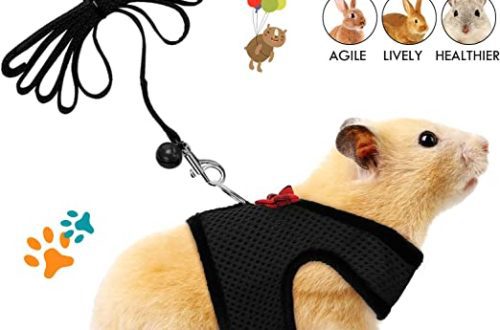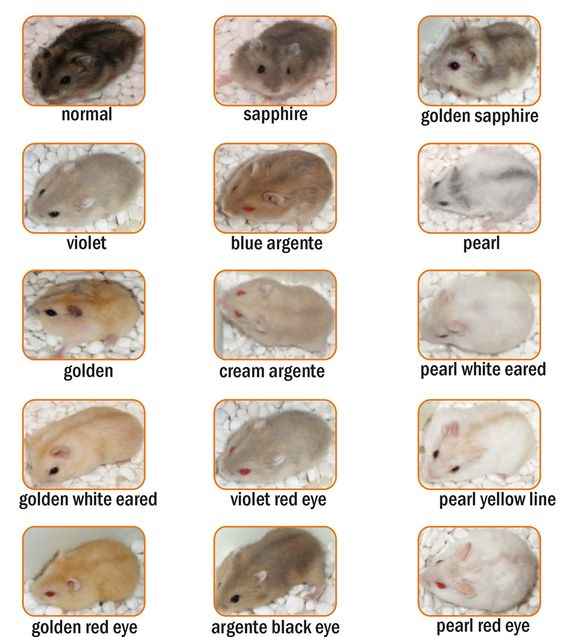
How to distinguish Campbell’s hamster from jungarik by external signs
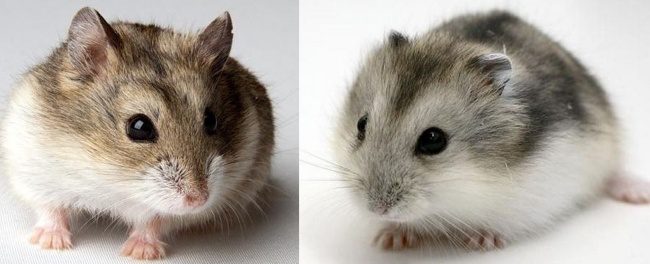
Decorative and cute hamsters are one of the most common pets. They do not take up much space, do not need walking, and besides, they are very interesting to watch. Many lovers of these rodents, before choosing a pet, are wondering how to distinguish Campbell’s hamster from a jungarik, and which one is better to buy as a pet.
Contents
Dzungarian hamster and Campbell’s hamster: biological features
Both species of these small rodents belong to the genus Upland Hamsters. They can mate with each other, so you can often find hybrids in pet stores. Both species are small in size: from 7 to 10 cm in length. The weight of an adult animal is no more than 65-70 grams. These animals are predominantly nocturnal.
Due to their size, both the Djungarian hamster and its dwarf relative can live in small cages, aquariums or plastic terrariums. They are kept singly, sawdust or shavings are necessarily poured onto the floor. The basis of the menu of both types is cereal mixtures, dried corn cobs, pumpkin seeds.
Animals live in deep burrows. It usually has 4-5 inputs. Each of them leads to its own “department”. The hamster’s home has separate chambers for food and rest. Animals breed from March-April to October (in captivity they can mate and give birth throughout the year). In one litter, the female brings up to 11 babies.
There is a difference in the duration of pregnancy: Dzhungars carry offspring for 21-26 days, and Campbells – 18-22 days.
How to distinguish a Djungarian hamster from Campbell’s hamster
Despite the fact that the animals of both species are very similar to each other, there are signs that make it possible to distinguish the jungarik from Campbell:
Wool type
Dzungarians have a denser coat, fits well to the body, looks smooth and shiny. Campbell’s hairs are slightly wavy, which gives the animal a slightly tousled look.
Color
Djungarian hamsters can have several different colors, but they all share one trait. the presence of wide stripes on the sides and a “belt” on the back, and on the muzzle it forms a brightly outlined rhombus. Campbells are more red, usually they are evenly colored, a thin black stripe stretches along the back, but it is not on the sides. Coat colors are as follows: standard, tangerine, pearl (can also be tangerine or blue), camel (blue tangerine) and pearl camel, sapphire.
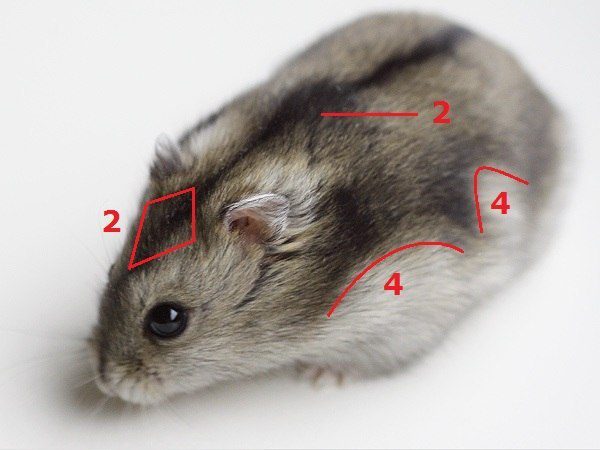
Campbell hamsters can also come in a variety of colors. The most common is agouti. There are also colors: albino, opal, argenta (with red and black eyes), black, deer (lilac or blue), gray, blue, chocolate, lilac, beige blue or dark, spotted, platinum.
Campbell’s hamsters, unlike jungars, do not change their color during the cold season. In jungars, when changing to a winter coat, the strip on the back can practically disappear, especially in light hamsters.
Body type
Campbell’s hamster has a waist. His torso is a bit like the number 8. In Dzhungaria, the body is more rounded, similar in shape to an egg.
Ears
Campbell’s hamster has smaller ears than a dzungarian.
Character
The owners note that Campbell, unlike the Dzungarian, is a more aggressive and unsociable animal. They do not really like to sit on their hands, they can bite. Dzhungarik has a rather friendly character, is well tamed, more willing to make contact.
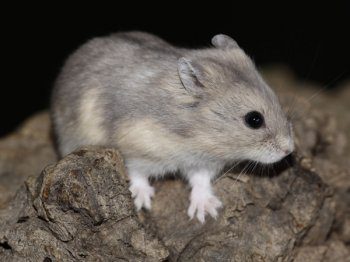
Which hamster is best for a pet?
Both species are active nocturnal. They are happy to dig in the litter, run on the wheel, rustle food in the bowl. The owners of these animals note that Djungarian hamsters are more suitable as a pet, as they are usually friendlier, easier to tame, and love to fall asleep in their arms.
Campbells, on the other hand, are more aggressive. They like to show their difficult temper, they bite their fingers hard. Some representatives of the species have to be picked up in special leather gloves.
However, despite such differences in characters, in each species there are exceptions. Jungars can also be aggressive, and some Campbell representatives, on the contrary, will be very affectionate and tame.
Representatives of any kind of hamsters do not live long – only 2-3 years. Each owner must provide the necessary conditions for their pet. These animals are well tamed, therefore, if you have patience and tasty treats, you can teach not only peace-loving jungars, but also more obstinate Campbells.
What is the difference between Djungarian hamster and Campbell’s hamster
3.4 (68.1%) 84 votes



